Learn how to make pistachio flour with this step-by-step guide complete with photos to help you achieve beautiful, flavorful homemade nut flour with just one ingredient – pistachios!
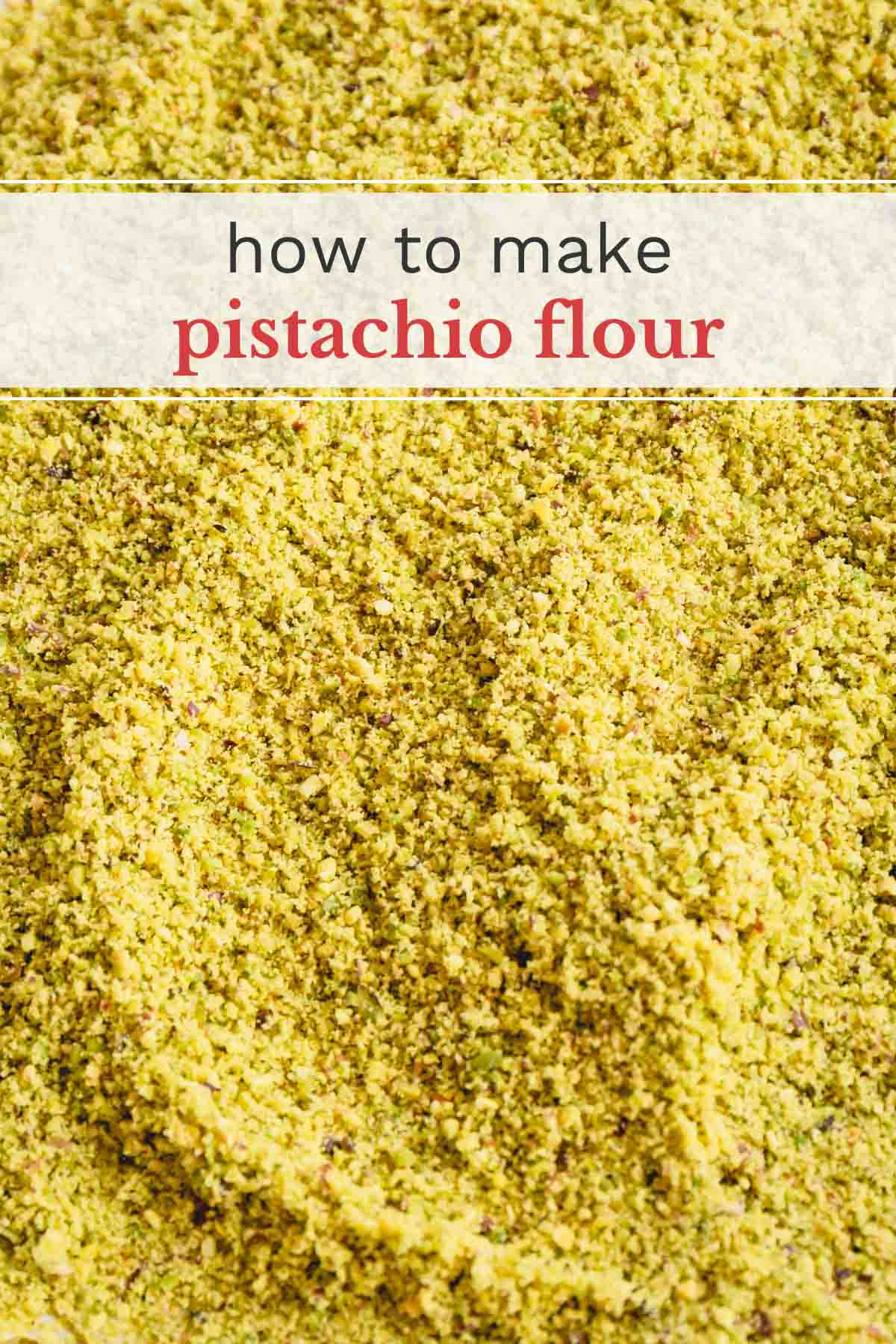
Table of Contents
Pin this now to find it later
Pin ItWhat is pistachio flour?
Pistachio flour is a type of flour made out of whole pistachios that have been blanched, roasted, and ground. The nuts break down into a sand-like powder that can be used just like you would any other nut flour.
It has a light green hue and provides a rich, slightly nutty flavor. You can make a variety of recipes with this homemade nut flour, including my famous pistachio macarons.
Why you’ll love this DIY nut flour:
Making pistachio flour is a simple process that requires just one ingredient! All you need are pistachios and a little bit of patience.
- Adds a pretty color and nutty taste to a variety of recipes.
- Easy and budget-friendly to make.
- Stores well so you can keep a batch on hand for all your baking needs!
You’ll be surprised how simple pistachios can be transformed into a gourmet ingredient with just a few steps!
Key Ingredient Notes:
- Raw shell pistachios – You can find bags of pistachios online or in the bulk ingredient or nut sections of your local grocery store. Choose unroasted, unsalted pistachios for the best flavor and color. I also prefer shelled pistachios so I don’t have to shell them myself, but that part is up to you!
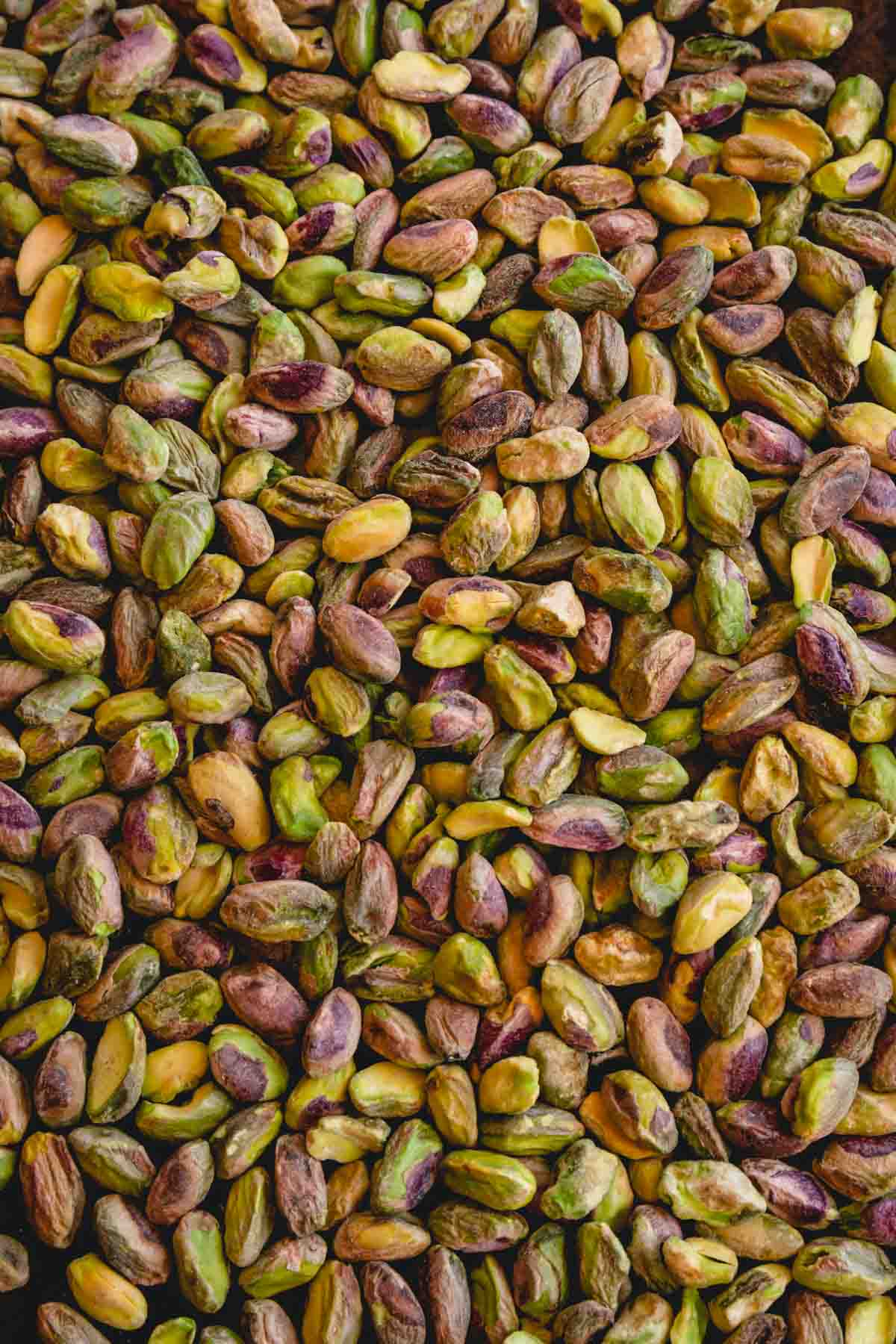
How to make homemade pistachio flour:
To ensure bright green pistachio flour, you can blanch and peel the brown skin off of pistachios, but it’s an optional step. Check out my pistachio paste tutorial for full instructions on how to blanch and peel the brown skin.
1. Lightly roast the pistachios
- Preheat the oven to 300°F.
- Spread the pistachios in a single layer on a baking sheet.
- Roast the nuts for 10-12 minutes or until they become fragrant. Be careful not to let them turn brown or burn!
- Cool the pistachios completely.
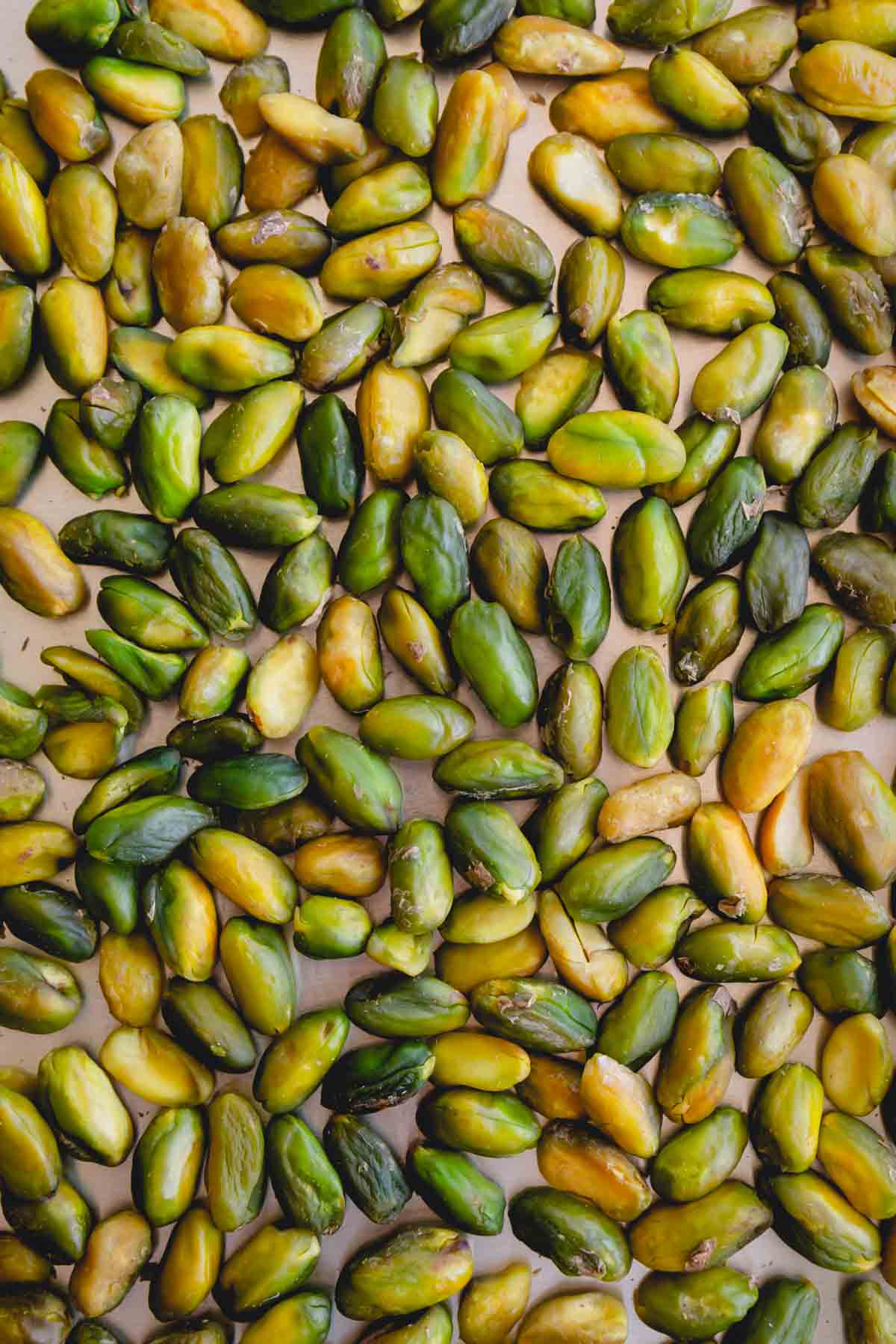
Don’t skip this step!
It helps dry out the nuts, making them easier to blend and enhancing their flavor. As a result, this DIY recipe is better than any pre-made pistachio flour you’ll find in the store.
2. Make pistachio flour
- Transfer the nuts to a food processor or blender.
- Pulse until they’re finely ground.
- Sift the flour through a fine mesh sieve to remove any large pieces.
- Transfer any leftover chunks back to the food processor (or blender), and pulse again. This way you can avoid over-processing the pistachios while also preventing waste. It’s a win-win!
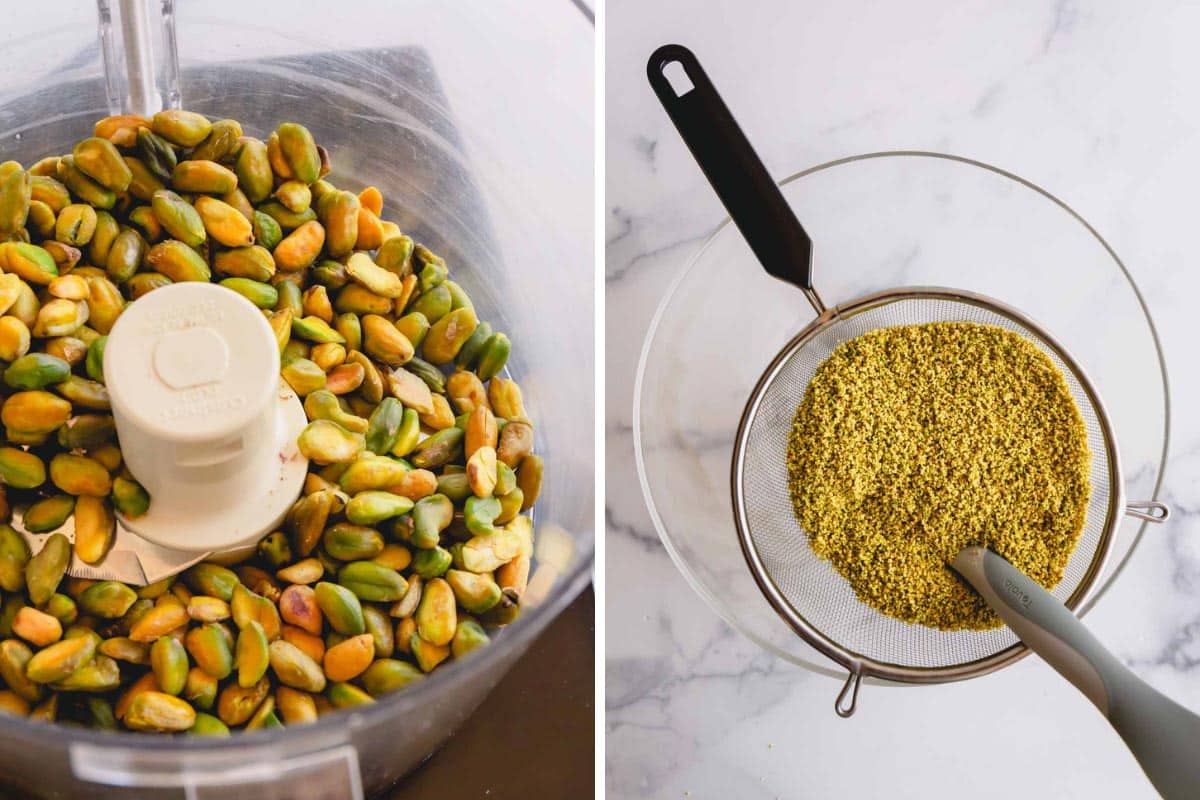
Pulse the food processor manually!
If you run it continually, the nuts will release oil and turn the mixture into pistachio paste instead!
Tips for Success:
- Don’t skip peeling the skin. I’ve mentioned it a few times, but it’s worth stating again! Peeling the skin is the best way to achieve a bright green color.
- Keep a close eye on the oven. Pistachios roast quickly. So, be careful to keep a close eye on your oven, and remove them as soon as they become fragrant. You do not want them to look brown!
- Allow the roasted nuts to cool. Once removed from the oven, set the pistachios aside to cool completely. This prevents moisture from getting trapped in the blender and turning your flour into mush.
- Do not overmix. Continuing to pulse your pistachios once a flour-like consistency has been formed will only release the natural oil in the nuts, transforming your flour into a paste!
- Transfer the flour to an airtight container. Be sure to always store your flour in an airtight container to prevent bugs and keep it fresh.
Storing Tips:
- Store the flour in an airtight container or a glass jar with a lid that seals.
- It will last up to one month in the fridge.
- Pistachio flour is freezer-friendly, too! For a longer-lasting option, transfer it to the freezer for up to 2-3 months.

FAQs:
Pistachio flour is primarily used as an alternative flour for baked goods like pistachio macarons. However, it can be used in savory recipes, too. For example, it works well as a breading for meats, a thickening agent for sauces and soups, and as a key ingredient for pizza dough!
Pistachio flour has a flavor that’s all its own! It’s nutty, slightly sweet, and can sometimes have a slightly bitter aftertaste.
Every recipe will be different, but pistachio flour can generally be substituted for regular flour.
Yes, pistachio flour makes for a great substitute for almond flour. However, you’ll want to note that it does have a different, slightly stronger taste!
Other How-To Recipes:
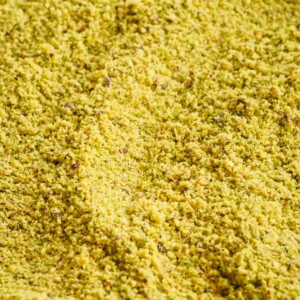
DIY Pistachio Flour
Ingredients
- Raw shelled pistachios Note 1
Equipment
- 1 Food processor or blender
- 1 fine mesh sieve
Instructions
- Preheat the oven to 300°F (150°C).
- Spread the prepared pistachios in a single layer on a baking sheet.
- Roast the pistachios for 10-12 minutes until they become fragrant. Keep a close eye on them, and don’t let them brown!
- Cool the pistachios completely, then transfer them to a food processor or blender.
- Pulse the nuts until they’re finely ground. Don’t be tempted to run the processor continuously, or the nuts will release oil and turn into a pistachio paste instead.
- Sift the pistachio flour through a fine mesh sieve to remove any large pieces or chunks that did not get ground. Put the bigger chunks back into the processor to pulse some more. This way, you won’t risk over-processing the pistachios.
Tips & Notes
– Store the pistachio flour in an airtight container or a glass jar with a lid that seals.
– It will last up to one month in the fridge.
– Pistachio flour is freezer-friendly, too! For a longer-lasting option, transfer it to the freezer for up to 2-3 months.
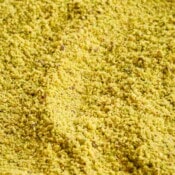

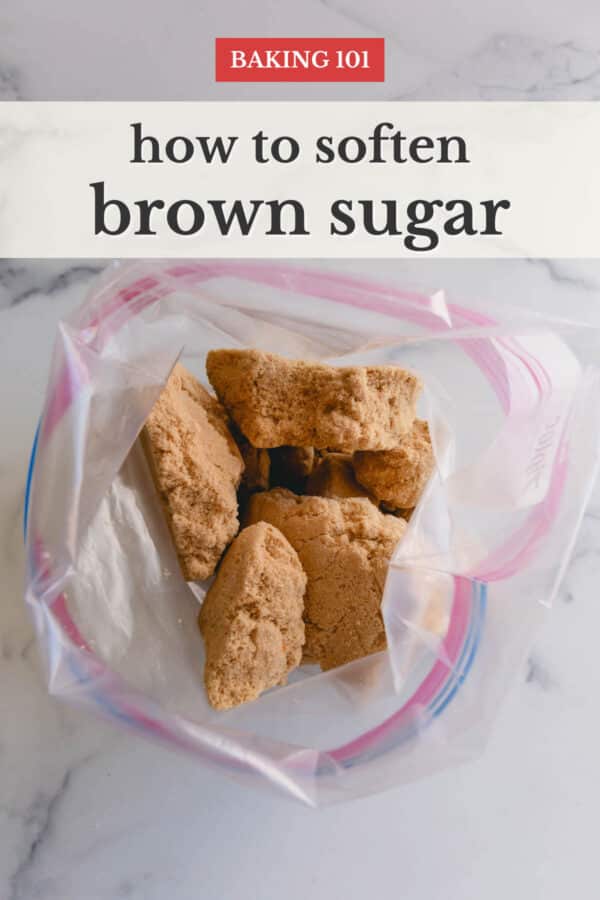
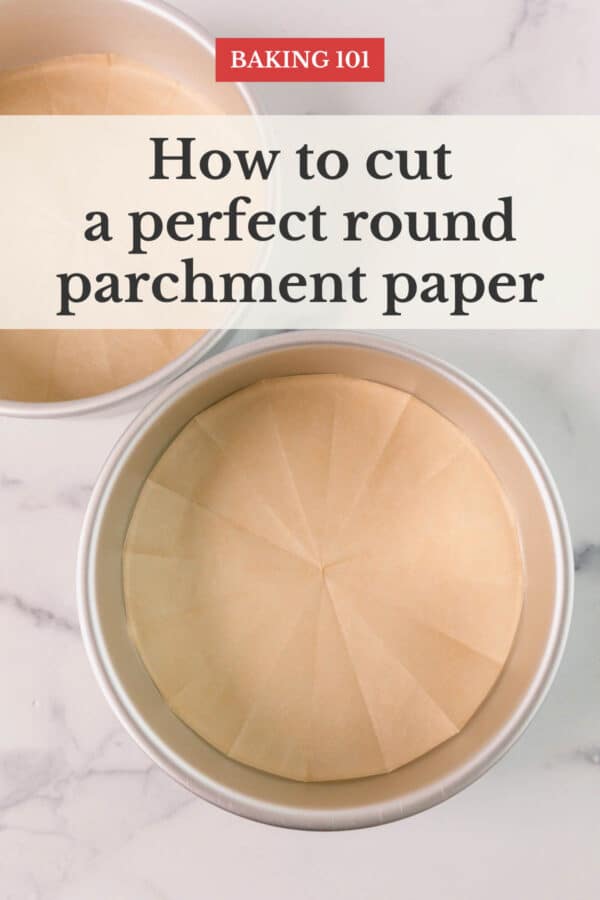
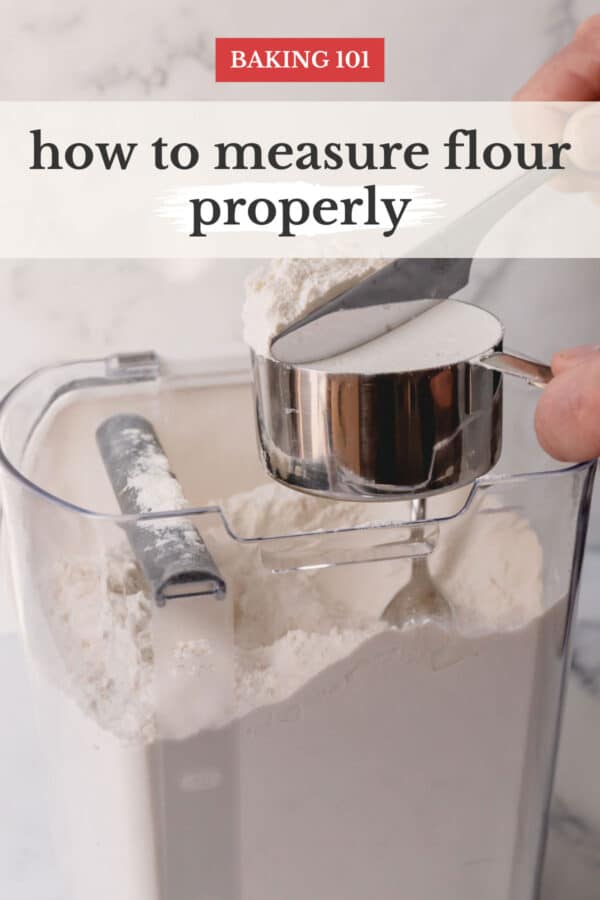
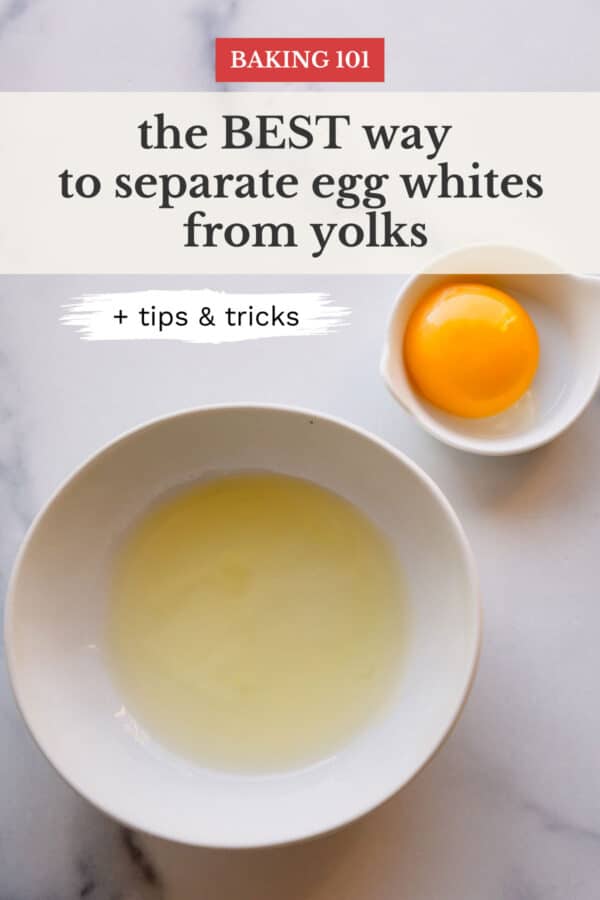

I used salted pistachios. I am going to make macroons. Do i need to remake em?
Hi, Julia. Well, try it and see if you like it. It might turn out a bit salty.